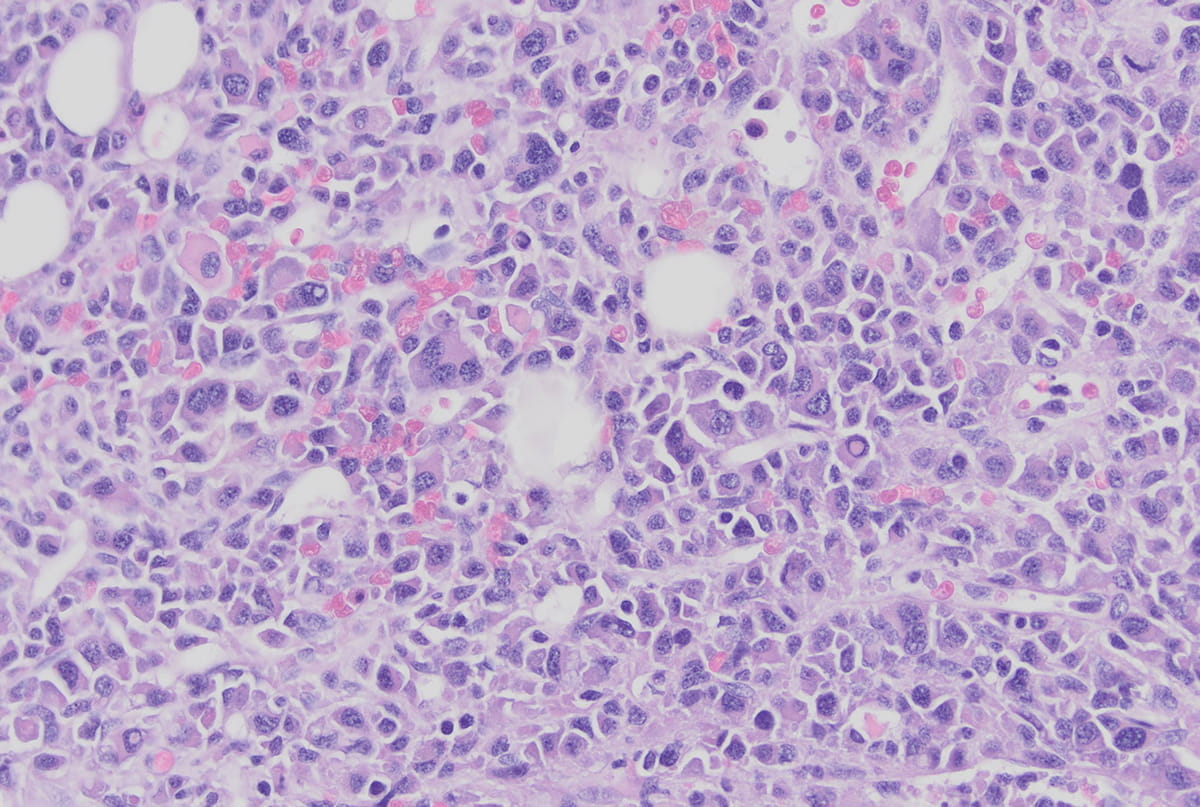A patient's medical history, age, and demographics are another set of variables the lab can use to distinguish how cancer behaves. It's a level of granular detail that's often lacking. "You're not inferring relationships," said Walker, the Daniel and Lori Efroymson Professor of Oncology. "You can see exactly what the changes are, how the cells behave, and what the biology is."
Eventually, researchers could find pressing answers to vexing questions. Why do only one percent of patients with precursor conditions progress to myeloma? If we understood those mechanics, could we prevent the cancer?
"If nothing else, understanding those genetic differences would let us create subtypes and stratify patients more effectively," said Kelvin Lee, MD, director of the IU Simon Comprehensive Cancer Center, H.H. Gregg Professor of Oncology, and a myeloma researcher.
When patients enroll in IU's registry, they consent to provide occasional blood and bone marrow samples and access to their medical records. Those tissue samples, which are stored in Indianapolis, serve as time-series events. Paired with a treatment history, the registry crafts a real-time account of how myeloma behaves.
Researchers can learn how people respond to therapy, what changes are happening in cancer cells, and why some don't respond. "Even now, we are able to provide better tools to determine their prognosis," said Rafat Abonour, MD, the Harry and Edith Gladstein Professor of Cancer Research.
Those insights are coming at a crucial moment.
Since 2012, drugmakers brought a handful of new treatments to market, including several improved proteasome inhibitors. In myeloma cells, proteasomes are a garbage disposal to remove misfolded and poorly functioning proteins. Usually, these inhibitors, and another drug, halt that clean-up process. As the waste piles up, myeloma eventually dies. These second-generation drugs offered renewed hope for patients who saw traditional regimens fail.
Yet results in the real world haven't mimicked those posted during clinical trials. Instead of paving a path to long-term remission, some patients see their myeloma return within two years. IU's registry might help physicians and pharmaceutical companies understand why.
"Clinical trials are not always representative of the patients we see," said Abonour, who also leads IU's multiple myeloma program. "It's why I'm really excited about the registry. The more data we have from that, the better we can understand how these therapies are working in the clinic. We could come up with better tools and better classifications."
It's also a tool that drugmakers are keen to utilize.
Abu Zaid already said Genentech inked a partnership with the School of Medicine to use the registry as a pool to match patients with clinical trials. The benefits are easy to tease out. Minority patients, with incidence rates three times higher than other groups, could have easier access to the latest therapies. Meanwhile, patients whose myeloma isn't responding to existing treatment could have renewed hope.
And those insights are invaluable as oncologists try to adapt their care, Walker said. There's no sense in administering a drug when research shows that the genetic underpinnings of a patient's cancer probably make it futile.
"There's little point in treating a patient with a therapy that's likely not going to work," he said. "They could move on to more promising options."
Researchers at IU School of Medicine explore every facet of multiple myeloma–from the lab bench to the clinic. To support work that enhances care, contact Amber Kleopfer Senseny at 317-278-4510 or akelopfe@iu.edu.
